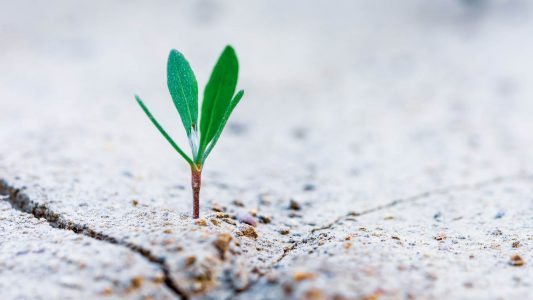
“Traditionally midwives are the wise women, the herbalists and psychologists of their communities. They knew who was sleeping in whose lodge — and being attentive to the sexual dynamics of their communities, could facilitate the sexual energy of birth. A major eradication of wise women took place in the dark ages and most midwives were destroyed as “witches”. It has taken a long time for a renaissance in birth to occur. Midwives today must be courageous to practice in our constrictive and litigious climate. Sometimes the most courageous amongst us, are targets of litigation. Midwives need the support of the entire healing community to face the challenges ahead.”
~Jeannine Parvati Baker, spiritual midwife
Besides the fact that I obviously have a vested personal interest in this topic, it’s also something that women ask me about often or it comes up during a mapping session after having a baby. While this post is geared towards vaginal birth, there is also something here for cesarean birth mamas. It’s often pregnancy itself that causes internal shifts and changes in pelvic health and genital configuration. So even if a baby didn’t pass through the vaginal canal, there is still great benefit to be had in implementing some of these practices. Let’s get started…
Yoni meaning
Yoni is the sanskrit term that means “source of all life” and includes the vulva, vagina and womb space as a whole. It’s possibly the most wholistic term out there for female genital and reproductive anatomy. It’s also totally fine if it doesn’t resonate for you and you’d prefer vulva, vagina, womb, pussy or the like. Reclaiming use of all these terms is worth doing!
Preparing for birth
The birthing process is life altering and alchemical. It changes us at every level and even in the best circumstances it sometimes results in tearing, abrasions, bruising, “skid marks,” swelling and the like. I was quite afraid of this before my first birth. I mean who wants to imagine their yoni tearing? Yikes!
I also knew I was at a slightly higher risk of tearing due to years of vigorous yoga practice on top of riding horses competitively as a young girl. Hello, hypertonic pelvic floor! I even used the Epi-no (which is a medical device that acts as a pelvic floor trainer for before or after birth) and I had a birth rehearsal. I would definitely do the birth rehearsal again, which is very direct and intense perineal massage, but I probably wouldn’t use the Epi-no again. I found it tricky to use.
Ultimately, it’s impossible to anticipate birth really since you can’t recreate the hormonal matrix that directly changes your pelvic tissues, perception of pain and so much more. However, the birth rehearsal gave me more embodied confidence and eased my fears and for that it was totally worth it.
With all that said, I think the best preparation you can do to prevent severe tearing or injury is learning about the physiology of birth and choosing a birth environment that will allow you to birth in an undisturbed way. Paying close attention to nutrition and being sure you have a good amount of healthy fats and foods high in vitamin C and collagen during your pregnancy can help create robust and healthy tissue and even set you up for quick healing if you do have an injury.
Yoni resilience
Because the vagina itself is a mucous membrane, it has remarkable and quick healing potential, much like the inside of the mouth. So, while I totally hear and validate your fear around tearing or injury, I’m also here to tell you that your yoni is amazing in it’s resilience! If you do have a tear or injury it is very likely that you can heal without long lasting pain or dysfunction.
Birth and suturing
Ok, so there are lots of theories and practices out there about how to prevent tearing during the birth process. These include things like manual counter pressure, using oil on the perineum during the birth, warm washcloths against the perineum before or during crowning and the like. It’s important to talk to your doctor or midwife (or anyone attending your birth) about what practices they might use. None of these practices are really evidence based. Of course, it’s completely up to you if you want them or not; however, any of these could compromise your intuitive capacity to change positions, interpret somatic feedback about where your baby is or just birth in an undisturbed way, which really isn’t possible with someone else’s hand on your yoni (unless you request that in the moment, which is unlikely).
If you do have a tear that could be sutured, almost all doctors will suture and most licensed midwives will also do the same. However, again this isn’t strongly supported by evidence. It’s also possible to heal without suturing and many have the experience of healing better and faster without suturing. I’ve learned a lot about alternative healing options through Indie Birth and the Free Birth Society. The practices I’m sharing here come from my own years of study and what worked for me in healing a first degree tear that I did have suturing for.
Healing practices after birth
As I mentioned, these practices can be useful (and some I would even say necessary!) for cesarean birth as well. All of these apply whether you chose to have sutures or not; although I’ll specify when some might be more appropriate for either choice.
Rest + Nourishment
If you can only manage to do one thing, it has to be staying in bed and keeping your legs closed so the tissue is actually able to heal properly. Ideally, you would be able to do this for 2 weeks minimum and then slowly return to walking around the house before considering longer walks or sitting in uncomfortable seating (like the car). During this time, especially the beginning when bleeding will be heaviest, either change your pad every few hours or free bleed onto a towel that can easily be changed out and use a peri bottle with warm clean water to rinse when you go to the bathroom. Eating warm, nourishing and nutrient dense food during this time will also help your recovery. Foods high in collagen (animal proteins, bone broth or collagen powder), healthy fats and vitamin C will help tissues heal.
Witch hazel pads plus aloe vera
Plenty of women are familiar with this trick. You can prepare frozen witch hazel pads before your birth and use them immediately postpartum to ease swelling and pain. Aloe vera is a natural anti-inflammatory and has antimicrobial properties to keep your yoni infection free. I haven’t tried this because in the Chinese Medicine tradition, cold is one thing you want to avoid immediately postpartum. However, I am curious and may consider it for a future birth, especially for the first day or two. To prepare, use organic cotton postpartum pads, apply a generous amount of witch hazel and freeze on a sheet pan before putting them into a plastic bag for storage. Add aloe vera on the pad before wearing.
Herbal sitz baths
This is also a popular recommendation. There are lots of great blends out there specifically for this use. These blends contain plants with antiseptic and soothing properties to relieve pain, decrease risk of infection and promote healing. You can make a blend for yourself by buying bulk herbs through Mountain Rose Herbs. I like to include: calendula, witch hazel, comfrey, lavender flowers, yarrow and sea salt. You can start immediately postpartum using a sitz bath that fits in your toilet or taking a very shallow bath in your tub. Bring about a handful of your blend to a simmer for 10 minutes or so, strain and use. Be sure the water isn’t too hot. Dilute with a bit of cooler water as needed. This can be done multiple times per day as needed.
Seaweed or manuka honey
This is a great alternative to suturing. Seaweed can be dampened with clean water and applied topically after aligning the edges of the laceration and kept in place to facilitate healing. Likewise, manuka honey, which has antimicrobial properties, could also be used to bring edges back together and soothe the tissue. Some women really swear by these methods but I haven’t tried them myself. I don’t think this really applies if you do have suturing but manuka honey may be soothing around the suturing.
Hydrosols and essential oils
This option is similar to the herbal sitz bath option; however, the application process is a little different since the oils of the plants are far more potent than the whole plant itself. Common essential oils that could be used in a carrier oil and applied topically to aid healing are: helichrysum, geranium, lavender and frankincense. Fractionated coconut oil is a good option as a carrier oil. Alternatively, you could use a spray bottle with clean water and essential oils emulsified in a bit of sea salt. Hydrosols are less concentrated than essential oils and are used a spray.
Arnica
Arnica is a homeopathic remedy that can be taken orally for pain, swelling and tissue trauma. I used Boiron Arnica 30c for those first few days after my first birth and didn’t feel the need for any other pain medication or management. Arnica also speeds the healing of any bruising.
Vaginal steaming
If you are only able to do two things from this list, then vaginal steaming would definitely be my second choice after rest and nourishment! This helped me immensely after my first birth. Vaginal steaming is a traditional practice found in various cultures. You can start steaming as soon as heavy bleeding has tapered off. I recommend steaming daily if possible for 2 weeks, or even up to 30 days.
This supports the healing of any superficial abrasions or tears and also helps the uterus to return to its pre pregnancy size. You can read all about additional benefits of steaming and how to do a simple set up for yourself here. Similar plants and herbs can be used as you use for your postpartum sitz bath or you can check out the custom Womb Medicine blend Metal -Soothe and Revitalize.
What I’ve listed here really applies in the immediate postpartum time, as in the first forty days. If you are still having pain or tenderness or any other issues after that initial healing phase, you may want to seek additional support. These could still be used; however, once scar tissue has formed, additional practices and modalities can be very useful for a complete recovery.
This post really just touches on one aspect of true embodied, whole woman care for the postpartum time! If you need more support for postpartum yoni care or have any questions, please reach out to me!





